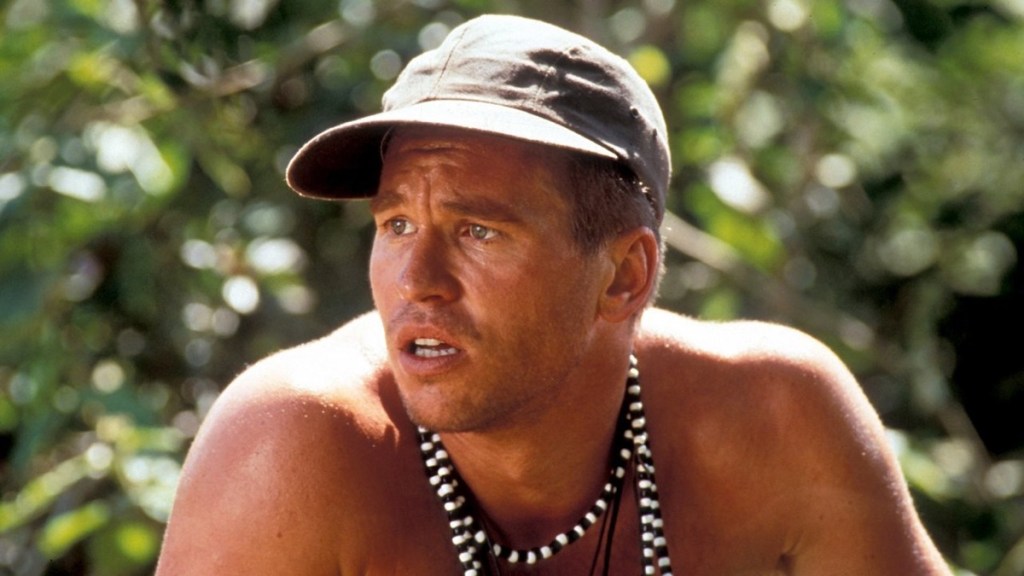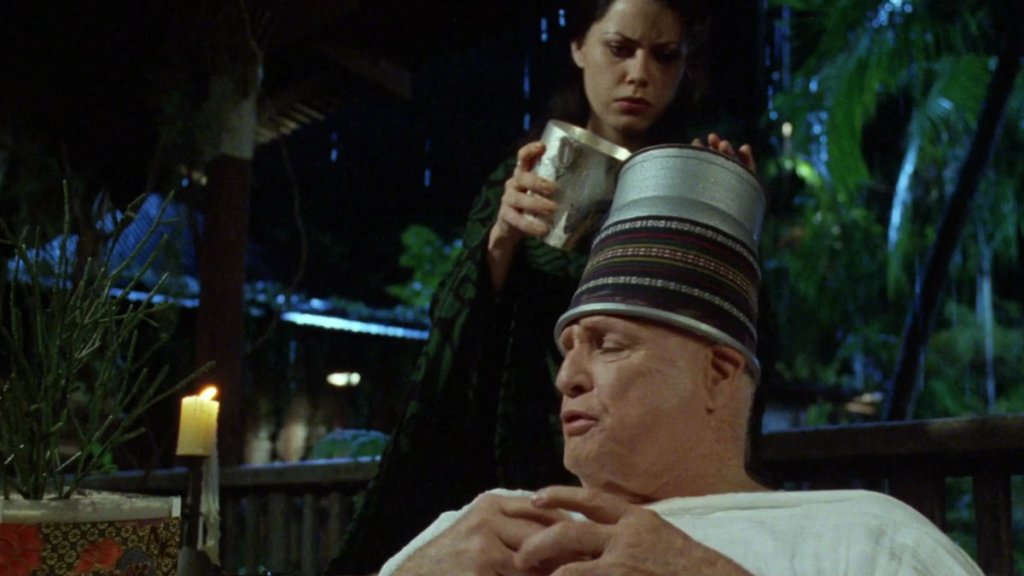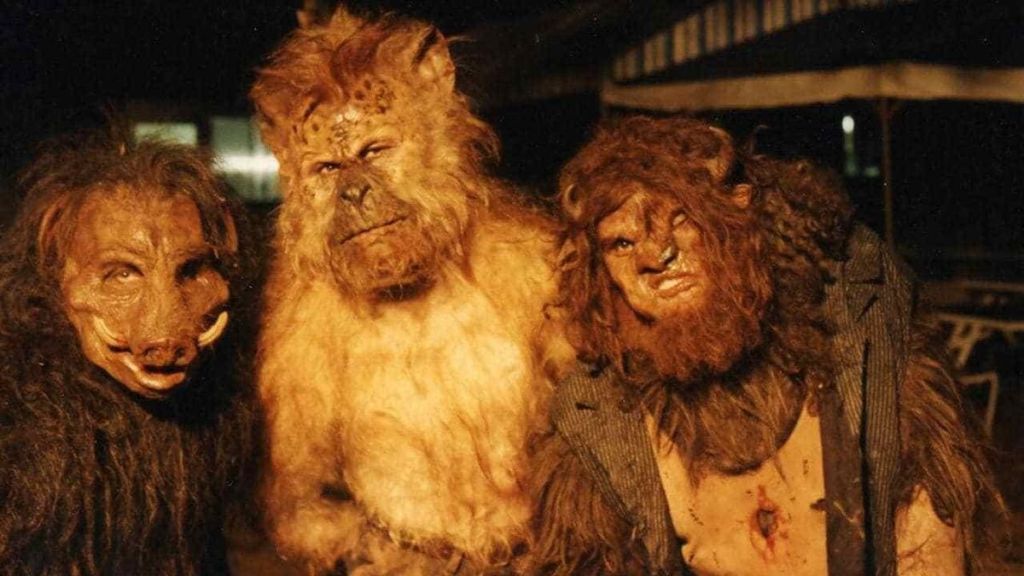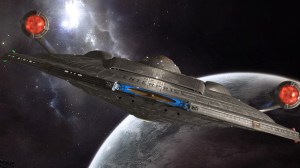1996’s The Island of Dr. Moreau was supposed to be a big movie for New Line Cinema. Instead, it was a massive headache for “The House That Freddy Built.” For one, the late Val Kilmer was one year off the best year of his career, having led 1995’s highest-grossing film (Batman Forever) and one of the very best crime epics in cinema history (Heat). Two, Marlon Brando was all set to play the title role. And three, it had an inventive director in Richard Stanley. But it’s because of those three individuals, and not just because of them, that the production was an absolute hell, with flaring tensions and a consistently escalating budget.
Videos by ComicBook.com
Like Apocalypse Now, Jaws, and Werner Herzog’s Fitzcarraldo, its production is the stuff of Hollywood legend. It’s just, unlike in those three cases, the final result was far from a classic, even if it is worth watching at least once.
Pre-Production

While Kilmer and Brando are the names and faces on the poster, they actually play supporting roles in the film. The true leads are David Thewlis, as Edward Douglas (named Edward Prendick in H. G. Wells), and The Craft‘s Fairuza Balk as Aissa, a mixture of cat and human who is Moreau’s favorite child. Initially, though, it wasn’t even supposed to be Thewlis, it was supposed to be Bruce Willis, but the Die Hard star left when his divorce from Demi Moore began.
Director Richard Stanley, whose only prior film was the fun but little-seen Hardware, had wanted to adapt Wells’s novel for years. But in New Line’s eyes, he wasn’t an established enough director, so they offered the project to Roman Polanski behind Stanley’s back, even though it was Stanley who had spent four straight years developing it and bringing it to the studio’s attention.
What did come of this was the casting of Brando. It wasn’t Stanley’s idea to cast the Apocalypse Now and The Godfather star, it was New Line’s. So, when Stanley found out he was being double-crossed, he went straight to Brando, who subsequently lent his support to the young director. It was also through Brando’s support that Willis became attached. And, as for who would play Montgomery, the role that eventually went to Kilmer, the first choice was James Woods.
When Willis left, Kilmer was brought on, but right off the bat, he had extreme demands. He demanded that his number of days on set be reduced by 40%, which then led to the idea of switching him over to the part of Montgomery instead of Douglas. This led to Woods’s exit from the project and the subsequent addition of Rob Morrow, of Northern Exposure fame.
[RELATED: 5 Marvel Movies That Had Behind-the-Scenes Drama]
Things finally looked to be all set. Stanley was the director, Morrow was Douglas, Brando was Dr. Moreau, and Kilmer was Montgomery. But then Brando’s daughter, Cheyenne, took her own life, at which point Brando sequestered himself on his own private island. No one knew whether he would even make it to set, so the role of Dr. Moreau was continuously slimmed down.
The Production Itself

Things didn’t get better once cameras started rolling in the North Queensland, Australia rainforest. Director Stanley was already weary of New Line after their attempt to bring Polanski on board, but that weariness went both ways. Stanley was always a peculiar individual, far from the type to play ball with big studios. He had a vision and his way of carrying it out was the way — but studios don’t like that.
As the stars and crew attested, Stanley showed his inexperience on set. It was his first big movie, so that’s not entirely unexpected. But Brando was on his island, meaning Stanley was without his sole advocate.
What really led to his ouster (just a few days into the shoot) was his inability to rein in the behavior of Kilmer. As was stated in the excellent documentary Lost Soul: The Doomed Journey of Richard Stanley’s Island of Dr. Moreau, the late actor didn’t get to set until two days after his start date and, when he did arrive, he tormented Stanley, the crew, and his co-stars. This included Kilmer burning a crew member’s face with a lit cigarette, according to the film’s executive producer, Tim Zinnemann.
Why did Kilmer exhibit such behavior? According to him, it was for the same reason Willis left the project: a divorce (from his Willow and Kill Me Again co-star Joanne Whalley).
New Line’s firing of Stanley was fairly unceremonious — they did it by fax. What followed was equally abrupt. Specifically, Stanley flat-out disappeared after shredding numerous documents that were to be used to keep the production going. New Line was sweating, worried that Stanley would do something to sabotage the production once a new director was brought on board.
At this point, both Balk and Morrow were growing extremely concerned, desperate to depart the sinking ship. On Balk’s end, she actually left the set in a rented limousine. But after a meeting with her agent, who told her New Line would ruin her career, she returned. Morrow, however, successfully departed the production after begging his agent to get him out of the mess.
Enter John Frankenheimer, director of Birdman of Alcatraz, The Manchurian Candidate, and the Elmore Leonard adaptation 52 Pick-Up. Kilmer’s reputation as difficult to work with developed over the years through multiple projects, but it mostly became known thanks to his behavior during this shoot. Frankenheimer’s identical reputation, however, had been a well-known fact for decades. Just about everyone who ever worked with him referred to him as a volatile, loud presence. In other words, the two were a match made far from Heaven.
New Line hired him partially for that reason — he was tough and known for his ability to get difficult productions back on track. On his part, Frankenheimer joined because, like Kilmer, he wanted to work with Brando. The massive fee he demanded helped as well. At this point, Frankenheimer had the script rewritten and brought in Thewlis to replace Morrow.
After a week and a half break, filming resumed, but so too did the difficulties. Even though he had made it to set, Brando was despondent, often spending hours in his trailer when he was supposed to be filming scenes. And, while Kilmer had been enticed by the idea of working with Brando, their big personalities clashed and clashed. At one point, both of them refused to exit their trailers, resulting in all the extras in their heavy, hot animal costumes standing around, nearing heat stroke.
As mentioned, Kilmer’s personality wasn’t the only big one on set. Brando didn’t make things easy on Frankenheimer either, with constant requests to change the script and odd additions to the film here and there. For instance, the white makeup Brando wears in most of his scenes was the actor’s idea, as was the scene where he has a big water jug on his head. The Hollywood legend was known for his refusal to learn lines, which means he often didn’t deliver the dialogue that came from the script’s rewrite. Instead, he had a small radio receiver in his ear and delivered his lines in his own way.
Clashing Castmates

When it came to open hostility, the lion’s share was between Kilmer and Brando. Brando once told Kilmer, “Your problem is you confuse the size of your paycheck with the size of your talent.” In his documentary Val, however, Kilmer stated that he and Brando never had a feud and, in his autobiography, I’m Your Huckleberry, the actor claimed that it originated from Frankenheimer and the director’s attempts to pin the movie’s failure on the Top Gun vet.
Where was the film’s previous director at this point? It turns out he was on set all along. Well, for a few days, at least. He just happened to be in full animal-human hybrid makeup. He took off the costume and makeup for the film’s wrap party, however, at which Kilmer, who had hated working with Frankenheimer even more, apologized to Stanley. So, at least it wasn’t all bad blood in the end.
The Aftermath

What was the end result after all this nonsense? A film that doesn’t always quite make sense but, if not taken too seriously (or seriously at all), is kind of fun. Without a doubt, what occurred behind the scenes is more interesting than the final product, but it’s an important entry on the filmography of all involved, especially Brando and Kilmer.
Brando was always going to survive this film. You don’t headline some of the very best movies in film history only to have a single production tank it, no matter how bad it and the end result are. Kilmer’s career, however, swiftly went into decline after this.
The early ’90s saw him viewed as an incredibly bankable star, thanks to Top Gun, Willow, The Doors, Tombstone, Batman Forever, and Heat. After this, his reputation shifted dramatically to being a liability. He starred in studio films throughout the remainder of the decade (The Ghost and the Darkness, The Saint, The Prince of Egypt, At First Sight, and the final blow to his A-list status, Red Planet), but it was all downhill from Dr. Moreau.
Stream The Island of Dr. Moreau for free on Plex.
Stream Lost Soul: The Doomed Journey of Richard Stanley’s Island of Dr. Moreau on Prime Video.








